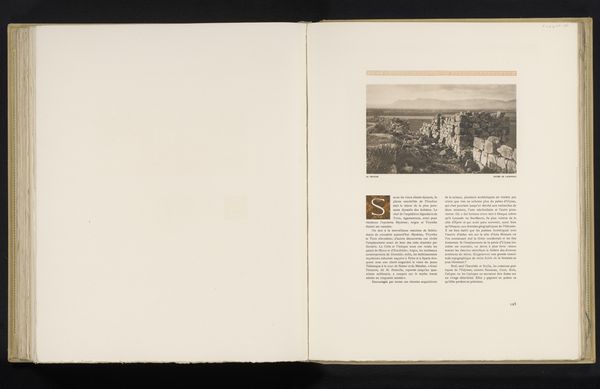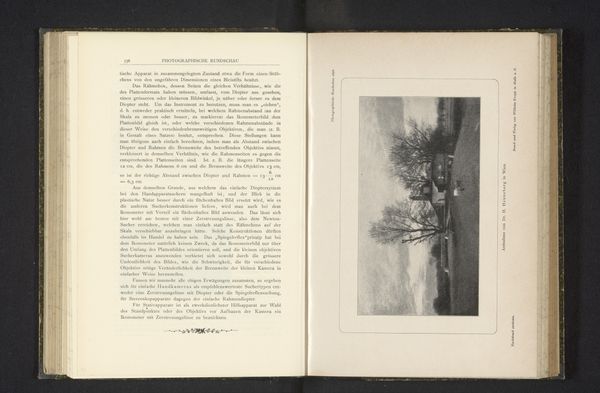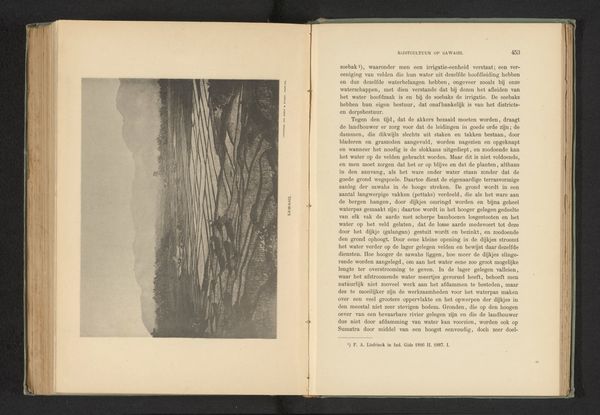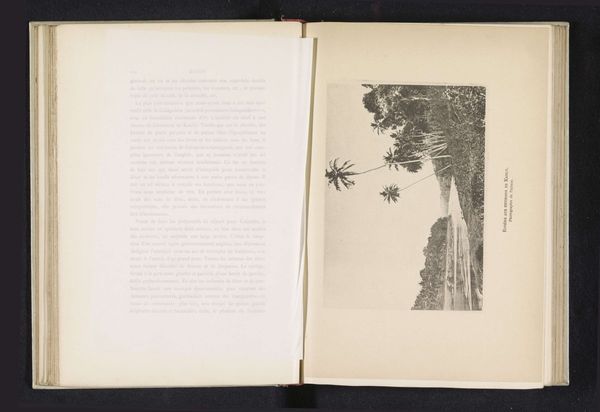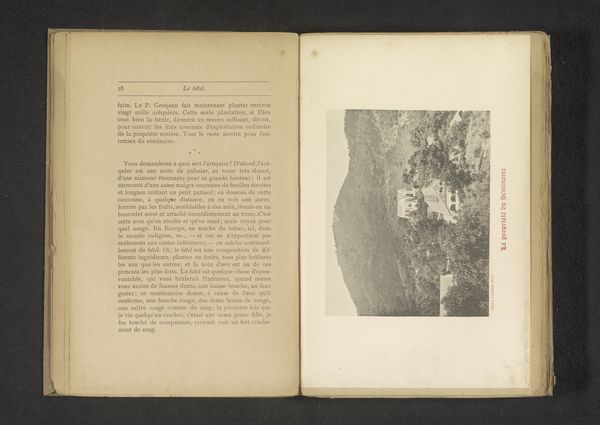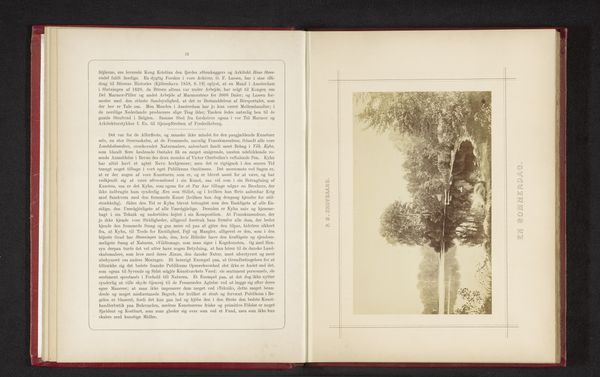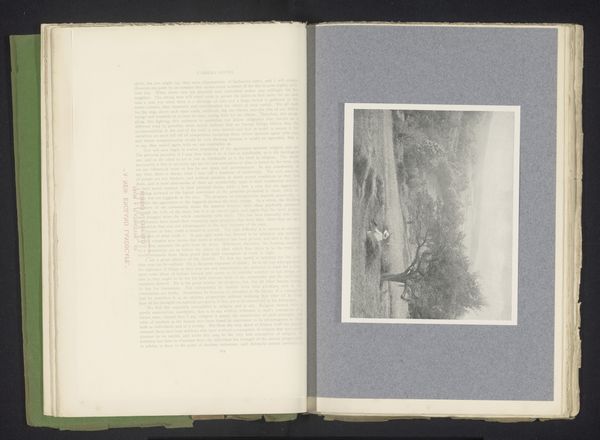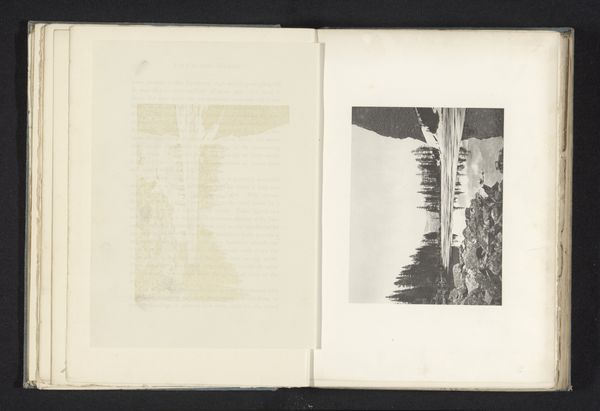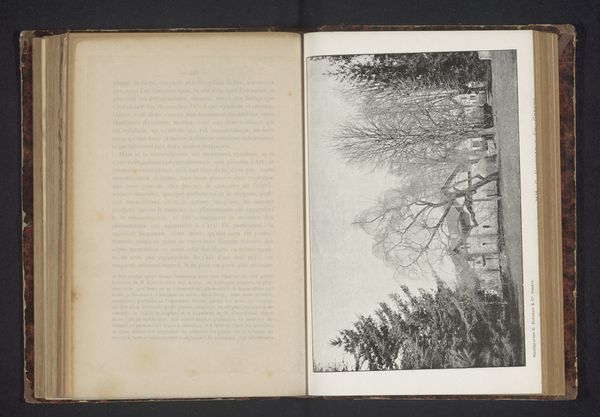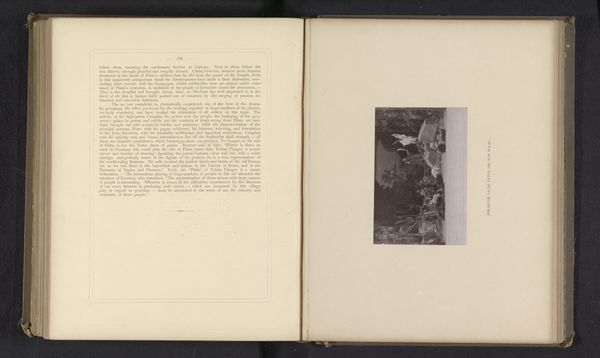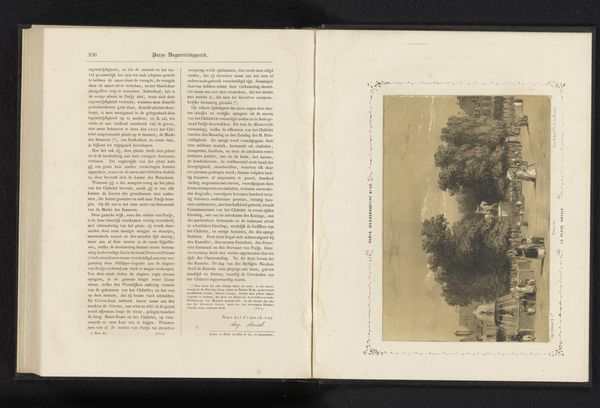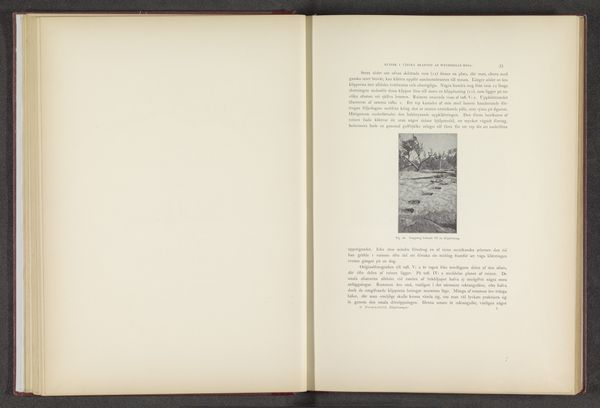
#
aged paper
#
paperlike
#
personal journal design
#
stylized text
#
thick font
#
publication mockup
#
paper medium
#
thin font
#
historical font
#
small font
Dimensions: height 159 mm, width 115 mm
Copyright: Rijks Museum: Open Domain
Editor: Here we have "Landschap met altaar," which translates to "Landscape with Altar," dated before 1898, by Charles Gaspar. It looks like it's printed on paper. I find the combination of the stark, leafless tree next to what seems to be an ancient altar strangely haunting. What strikes you when you look at this image? Curator: What's most interesting is how the photograph, ostensibly of a landscape, is presented within this 'Association Belge de Photographie' publication. This reframes our understanding. It moves beyond mere representation of scenery to a discussion about photography as an art form and its relationship to other cultural artifacts and societal structures. What are the politics of framing a 'landscape' in this way? Is it an attempt to legitimize photography alongside more established art forms? Editor: Politics, really? I was just thinking about how spooky the bare tree looked. Curator: Well, consider how the 'picturesque' and 'sublime' were popular artistic movements. How do publications and institutions cultivate certain aesthetics? Is this stark image deliberately challenging these conventions, or subtly reinforcing them within the photographic society's own aesthetic preferences and agenda? Does this particular landscape reflect societal anxieties of the late 19th century? Editor: I hadn't thought about any of that. It gives a whole new meaning to what I saw as a "simple" image. The societal influence on art is clear, making me rethink artistic intent and purpose. Curator: Exactly. Context is key. By thinking about how social institutions display and disseminate images, we move towards understanding art’s function in the broader cultural conversation. What appears ‘simple’ often masks complex dynamics of taste and power. I appreciate the shift in perspective we’ve both experienced!
Comments
No comments
Be the first to comment and join the conversation on the ultimate creative platform.
